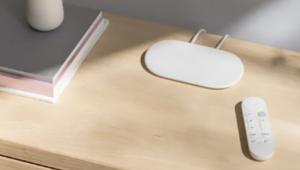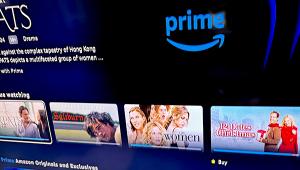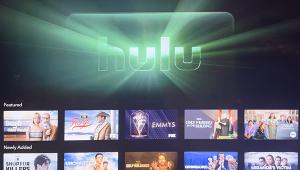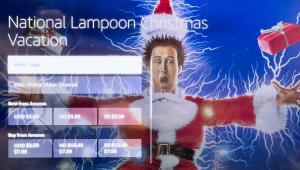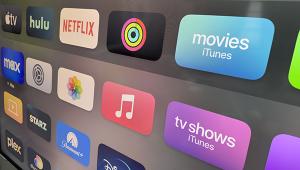Roku Channel Adds Shows, Removes YouTube TV

Roku is adding more content to its plethora of entertainment options. As new live TV channels are added to the Roku Channel, the company has dug in its heels in a dispute with Google over YouTube TV, which has temporarily been removed from Roku’s lineup. Roku has been slow to make deals before—it took a while for it to add Paramount + and HBO Max. But the the issue with Google is more than a financial chasm and has been publicly playing out with both companies asking users to support their side.
Roku Channel Grows
The Roku Channel launched in 2017 offering 40,000 ad-supported movies and TV shows. It’s grown to over 250,000 movies and TV episodes. In April, Roku added 25 channels to its live/linear TV lineup, bringing the live TV total to 190 channels. While the "free" Roku Channel is ad-supported, it has half as many commercials as broadcast TV.
Many of the newly added live TV channels are also a throwback. The list includes the CINEVAULT 70s and CINEVAULT 80s channels showing classic movies that are more nostalgic than well-made. For example, I watched John Travolta in The Boy in the Glass Bubble, but also The China Syndrome. Johnny Carson TV is another nostalgic channel that was just added.
PBS's America's Test Kitchen network, Frontdoor (home decorating), Divorce Court, Dr. G Medical Examiner, Don't Tell the Bride (where the groom does the wedding planning), and Adventure TV are the new lifestyle channels. Other reality-based channels include The Jack Hanna Channel, Real Crime, Law and Crime, Xumo Crime TV, and Vice news and documentaries.
Super Simple Songs, Slugterra, and Kids Pang are the new Kids TV channels. Rakuten Viki and beIN Sports Xtra Español add foreign language stations. Fuse Backstage and Fuse Beat have MTV-type programming. Rotten Tomatoes has fresh takes on favorite scenes, trailers, and conversations about movies and TV.
New Channels and content are listed on the Roku Channel's home screen. With nearly 200 channels, it can be hard to find the one you want to watch in the channel guide. If you know a channel or show's name, you scroll up to the search tool and type in the channel or show title. There's no voice typing, so if you search using voice, it will take you out of the Roku Channel for a global search of all channels on the device.
The interface for live TV is also clunky and unintuitive. There is an icon for the Live TV guide on the Roku Channel home screen. Unlike most apps, Roku doesn’t use the back/return button to return to the guide. Pressing the back arrow took me back to the Roku Channel home screen. To get back to the guide when watching a program, I pressed the left navigation arrow. When I tuned to a channel, the show's info was displayed over more than half the screen. While it’s a lot of screen real estate, there is little information about the show— a one-sentence synopsis, no casting info, or the year the title was released.
Recently, Roku announced that it acquired Quibi's original content, renaming it "Roku Originals." Today, it announced that Roku Originals will be released on May 20th—a significant date as it is the anniversary of Roku's 2008 launch. Thirty titles will be available in May, with an undetermined number to be added throughout the year.
Among the titles are shows starring Anna Kendrick, Chrissy Teigen, Joe Jonas, Adam Devine, Liam Hemsworth, Kiefer Sutherland, and Kevin Hart. Roku is also partnering with Kevin Hart in the Laugh Out Loud, LOL! Network. The Quibi shows haven't changed from those offered by the defunct app. Titles include Die Hart, #FreeRayshawn and Reno 911!, documentaries, such as Blackballed and Big Rad Wolf, and alternative and reality programming, including Punk’d and Chrissy’s Court. While most of the programming was previously available on Quibi, some never-before-seen episodes of Punk’d featuring DaBaby, Machine Gun Kelly and Tyra Banks are also included at launch.
YouTube TV Controversy
Carriage disputes are not exclusive to cable and satellite TV providers as the same issues are popping up in the streaming world. A conflict with Google has lead to Roku removing the YouTube TV channel.
YouTube TV is a comprehensive streaming subscription version of a cable or satellite TV service. Typically, streaming platforms and content providers have financial disagreements. However, this conflict stems from Google's request to request to boost YouTube TV's presence in Roku's interface and its insistence on specific video codec requirements.
According to Axios Google is requesting a dedicated search page, boosted music results, and a full block in the search results when the YouTube app is open. As this is not specific to YouTube TV, Roku claims that Google is trying to gain a stronger presence for all of YouTube. This doesn’t fit into Roku's doggedly agnostic (and therefore, one of the best) content search engines.
Google rebutted Roku's side of the story in a blog post. They claimed that the conversations were "simply to renew the current terms of their ongoing deal with YouTube TV...under the existing reasonable terms." Google also says that it was Roku who was opportunistic in wanting to renegotiate the YouTube app that doesn't expire until December.
A more telling paragraph in the Google blog post explains, "Our agreements with partners have technical requirements to ensure a high-quality experience on YouTube. Roku requested exceptions that would break the YouTube experience and limit our ability to update YouTube in order to fix issues or add new features. For example, by not supporting open-source video codecs, you wouldn't be able to watch YouTube in 4K HDR or 8K even if you bought a Roku device that supports that resolution."
This paragraph is referring to the upcoming AV1 video codec that Google and other companies have committed to using for video compression. Preliminary tests of the codec show that despite having a higher compression rate than the current H264— and therefore a smaller file that's faster to stream—it has better video quality. Tech experts have reported that AV1 is not ready for widespread adoption. The problem has been that it requires hardware to encode the video at a speed that is practical for streaming. When software is used to encode the video, it could take up to four days to render a feature-length film. This means that legacy Roku devices or those without a special chip may not be compatible with the new codec.
The differing viewpoints are being shared with the public online and in emails. Roku stated, "Google's actions are the clear conduct of an unchecked monopolist bent on crushing fair competition and harming consumer choice. The bundling announcement by YouTube highlights the kind of predatory business practices used by Google that Congress, Attorney Generals, and regulatory bodies around the world are investigating. Roku has not asked for one additional dollar in financial value from YouTubeTV. We have simply asked Google to stop their anticompetitive behavior of manipulating user search results to their unique financial benefit and to stop demanding access to sensitive data that no other partner on our platform receives today. In response, Google has continued its practice of blatantly leveraging its YouTube monopoly to force an independent company into an agreement that is both bad for consumers and bad for fair competition."
Google contends, "Separately, we are also in ongoing, long-term conversations with Roku to certify that new devices meet our technical requirements. This certification process exists to ensure a consistent and high-quality YouTube experience across different devices, including Google's own--so you know how to navigate the app and what to expect. We'll continue our conversations with Roku on certification, in good faith, with the goal of advocating for our mutual customers."
The back and forth has continued with both urging their customers to take their side, contact the other, or tweet about it to ask that this be settled.
While the YouTube TV app has been removed from the Roku channels store, it continues to be available for current subscribers. YouTube TV will be moved into the YouTube app, where to reach it, you will scroll to "Go to YouTube TV” on the left-side menu.
